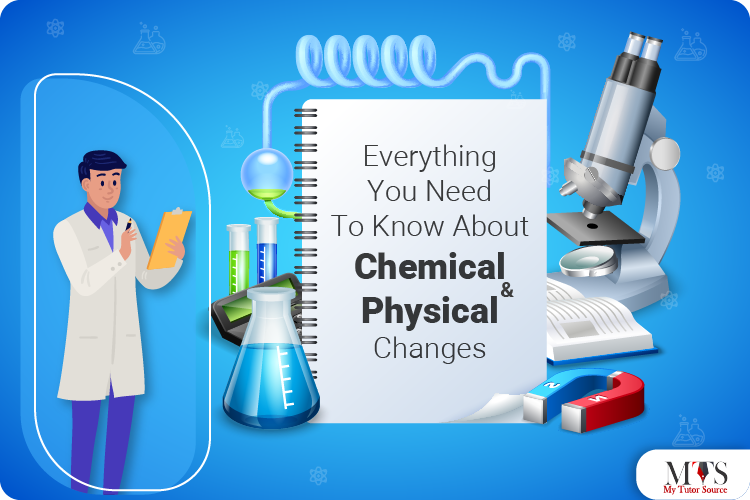

Matter undergoes a lot of chemical and physical changes based on the circumstances that are subjected to it. We have covered everything from chemical and physical changes to their example and their identification signs:
A physical change does not involve the formation of a new chemical species and the material that undergoes a physical change does not change and its structure remains the same before and after the transformation.
Some types of physical change include temperature, state of matter, texture, and shape. When something changes in texture, the way it feels also changes. For example, a rough lock of wood becomes smooth once you rub it with sandpaper. In this process, the chemical structure of wood remains the same however the way it feels changes.
Similarly, when you heat a piece of metal, it glows red but the material of the matter remains the same before and after heating. In the same way, when a substance goes from one phase to another, it remains the same just like water that turns into ice on cooling and steam on heating, respectively. In this process, the water remains the same chemically but it only changes physically (solid, liquid, gas).
If you want to spot a physical change, make sure to look for the following factors:
Can you reverse the change? Or did you see a change of color, precipitation, or bubble formation? If yes, then it is not a physical change, rather a chemical change. Moreover, did the chemical structure of the end product match with the chemical structure of the original substance? If your answer is yes, then the change is, indeed, a physical change.
When a substance undergoes a chemical change, its composition gets changed as well, which requires the breakage and production of new chemical bonds through a chemical reaction. In a chemical change, the atoms of the substance get rearranged and the end result has completely new molecules that cannot be transformed back to their original state.
Whenever a chemical change occurs there is some sort of gas production and sometimes bubbles are also produced along with odor. There is sound production as well as a change of color. Moreover, a precipitate is formed, temperature changes, and light is also produced.
A chemical change may not show all the signs we have mentioned above and if you do not see any of the above-mentioned signs of a chemical change, then there has likely been a physical change. However, physical change can also cause a dramatic change in a substance’s appearance. Sometimes chemical changes occur even if they only show the signs of a physical change. The most reliable way of making sure whether there has been a chemical reaction vs physical change is by doing a chemical analysis like mass spectroscopy of the starting materials and the end product.
And there you have a complete breakdown of chemical and physical changes!